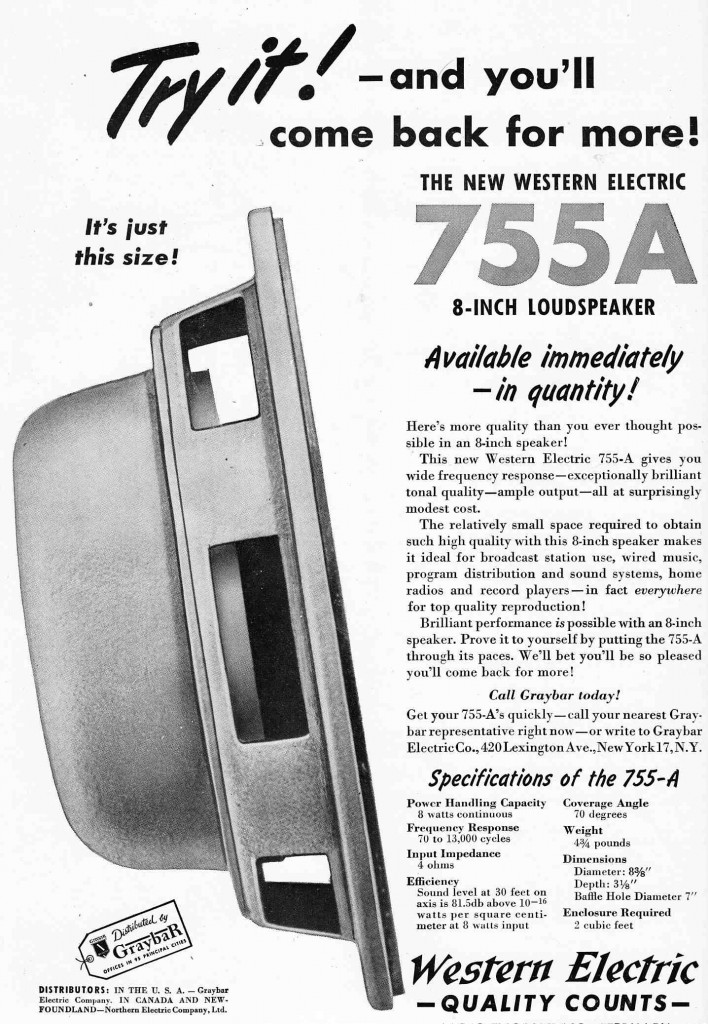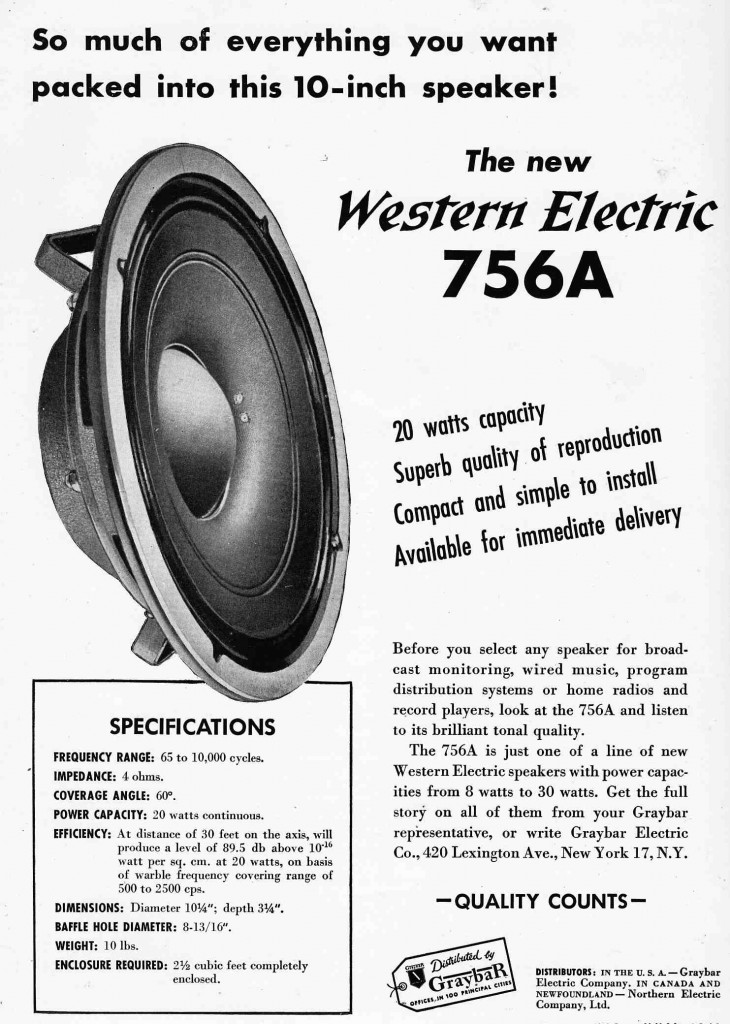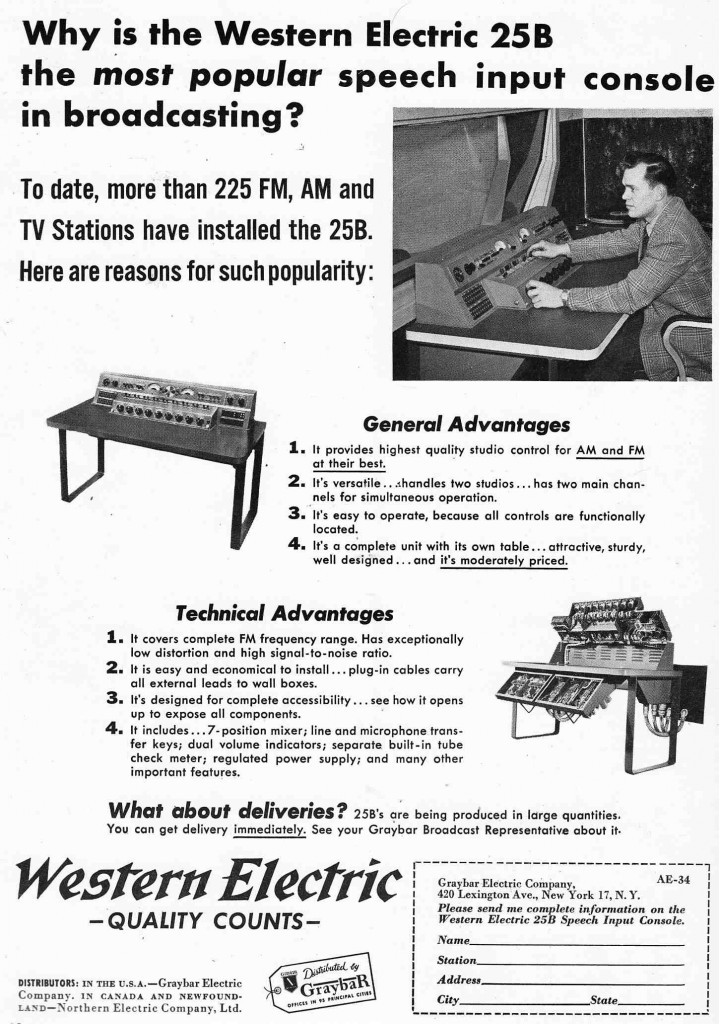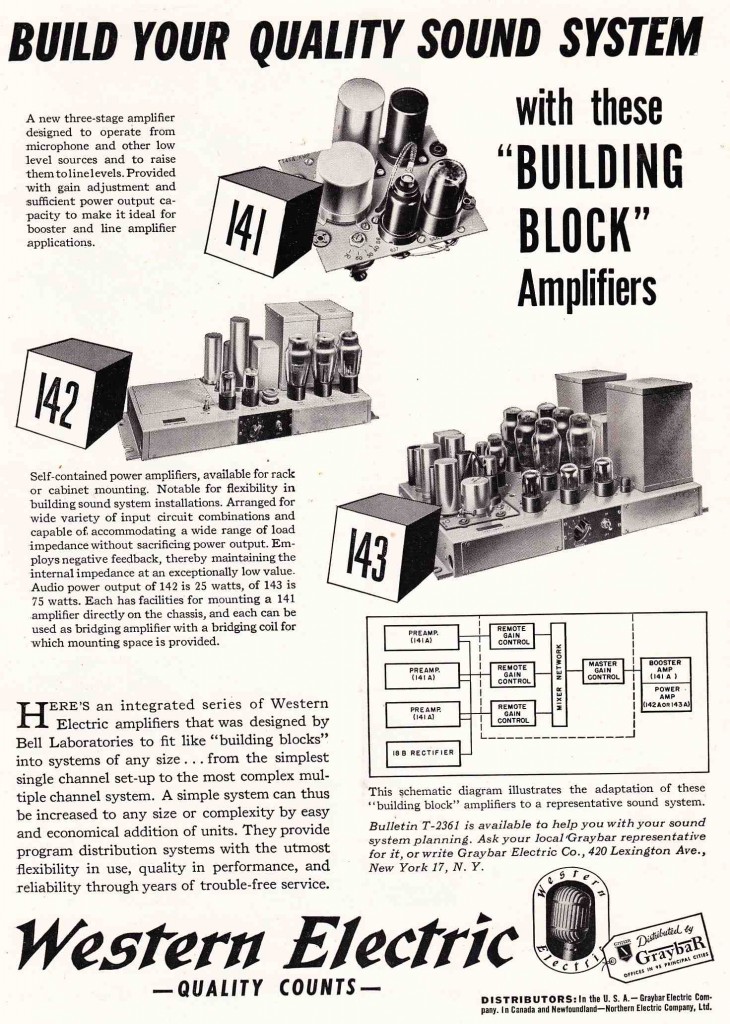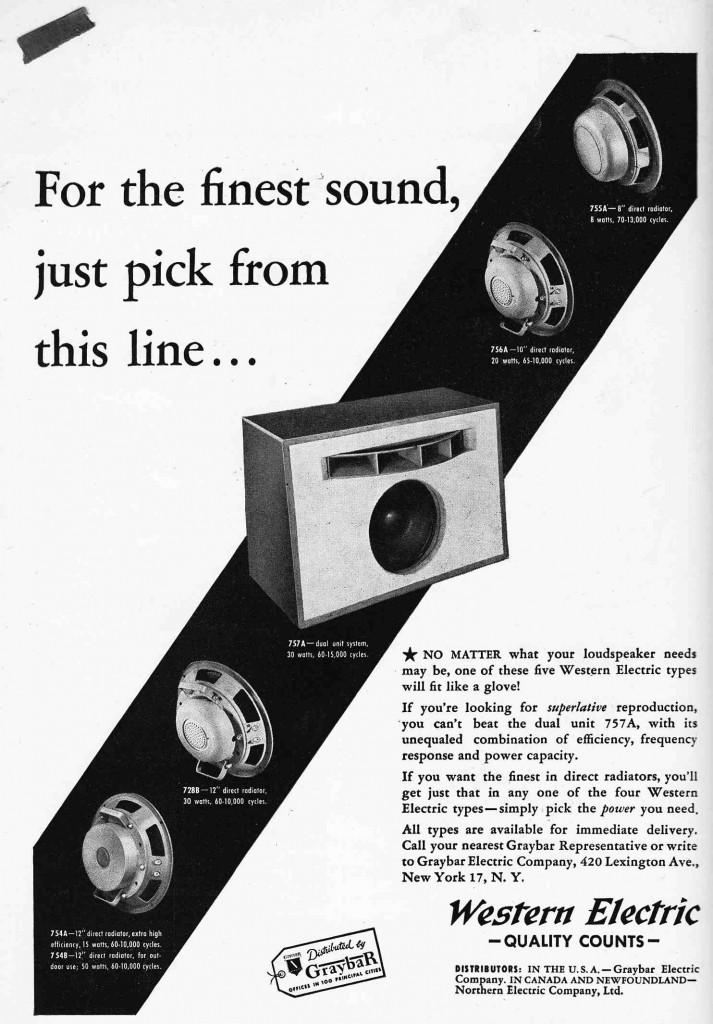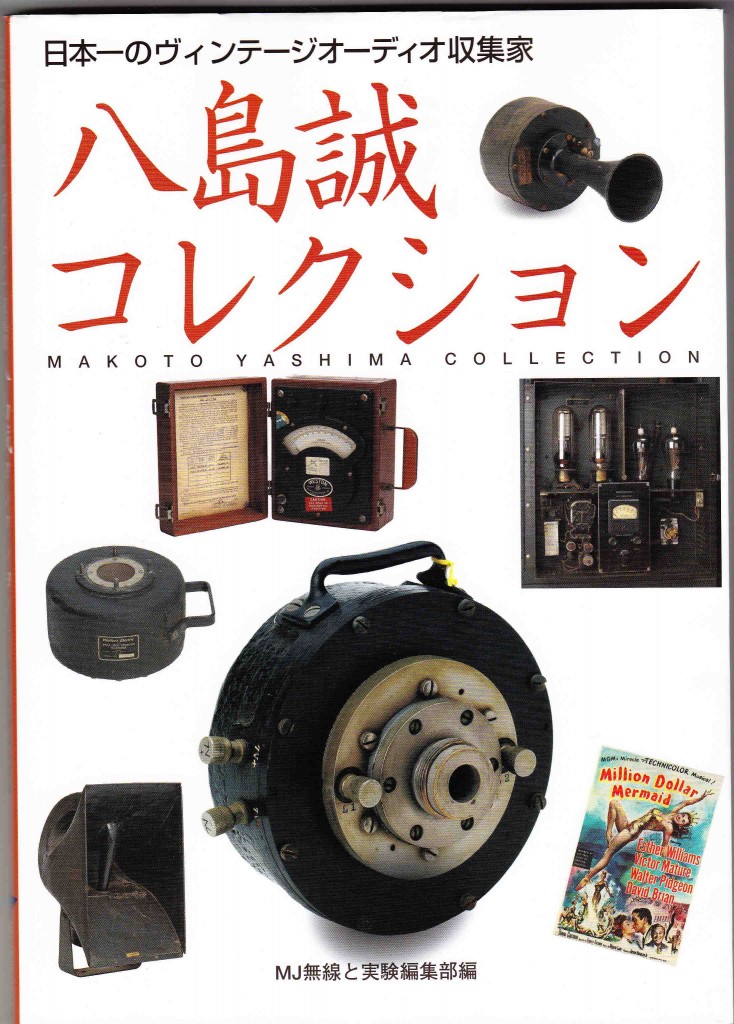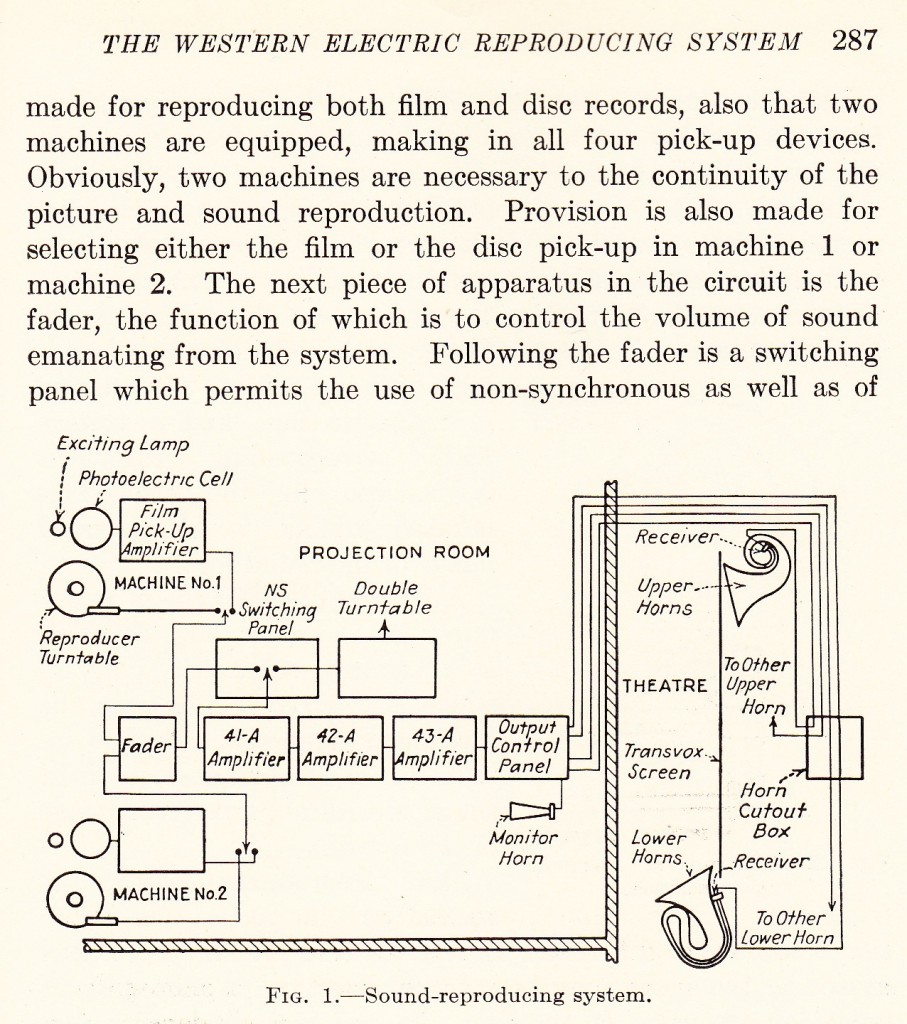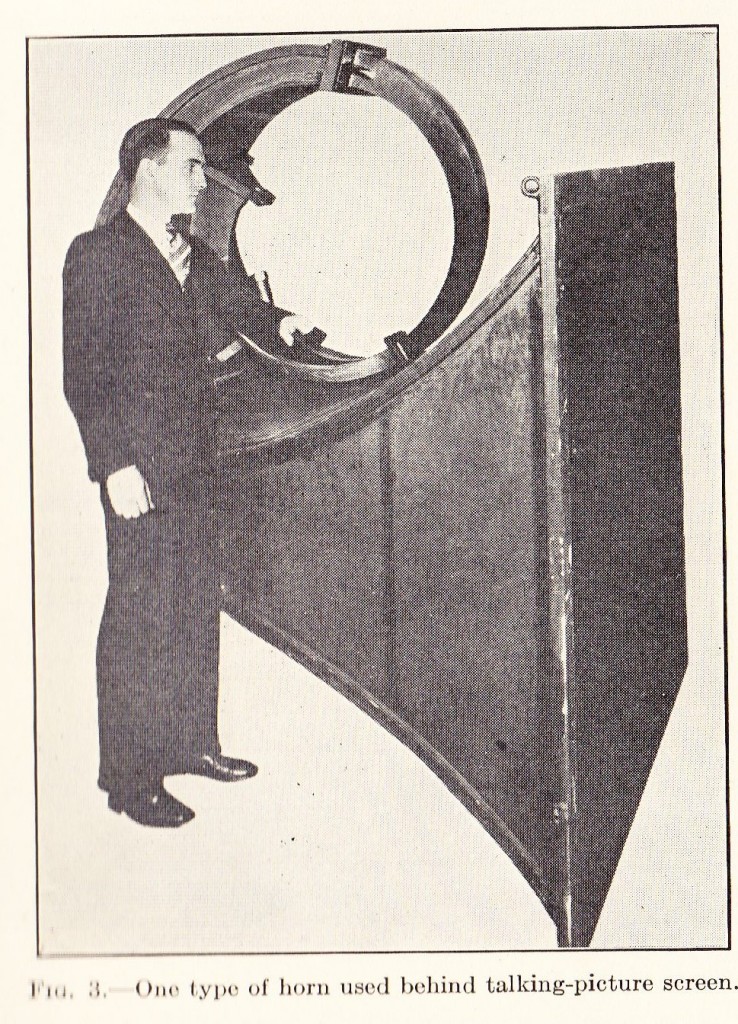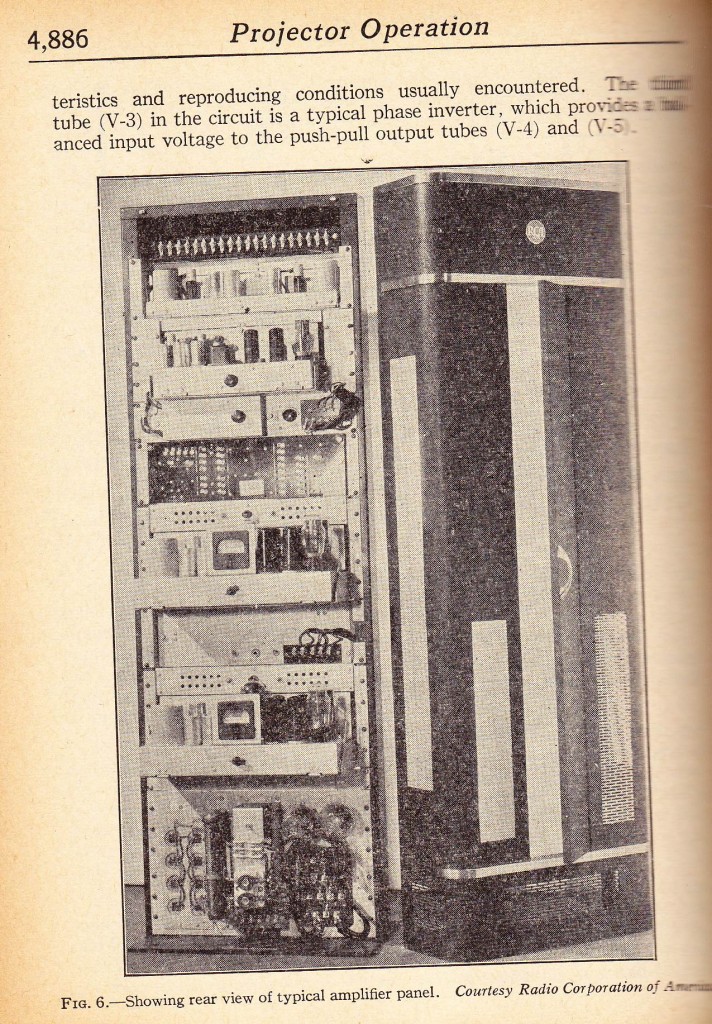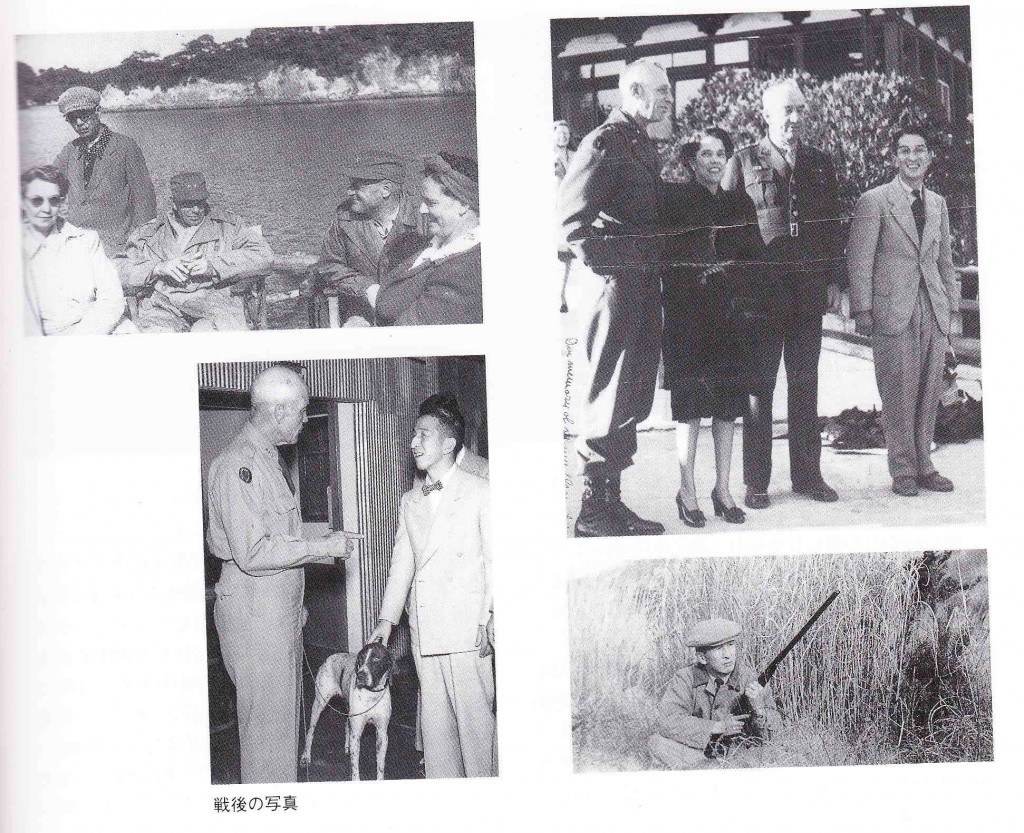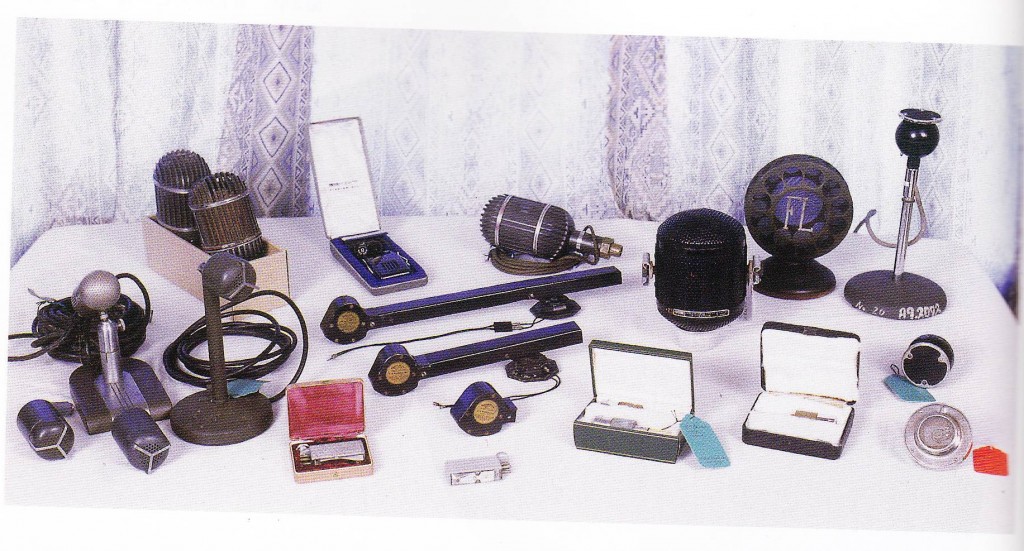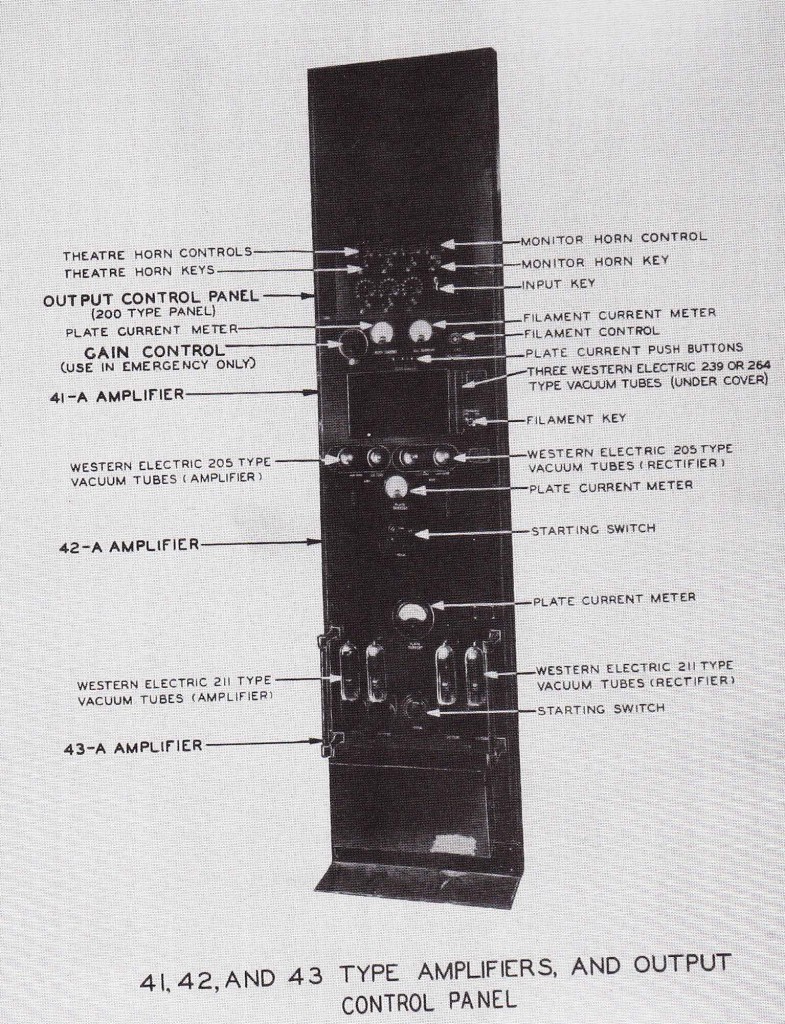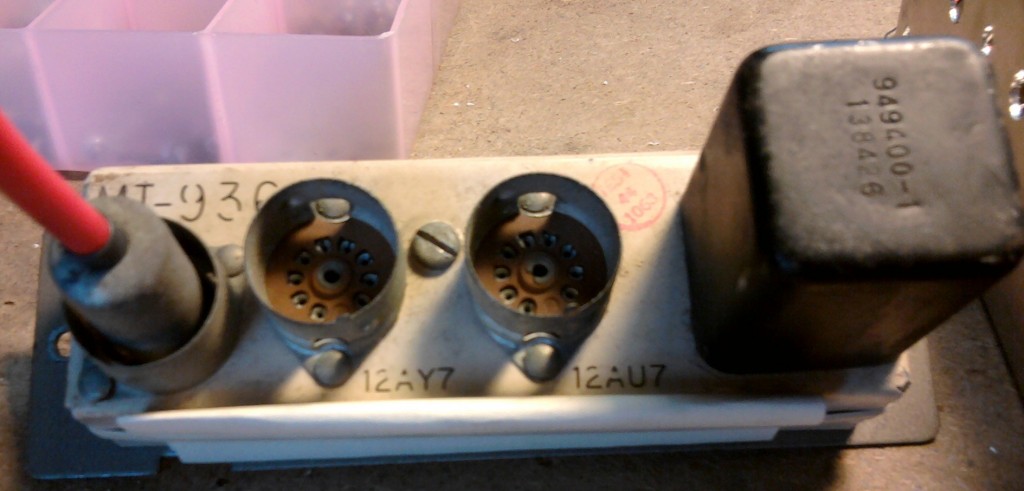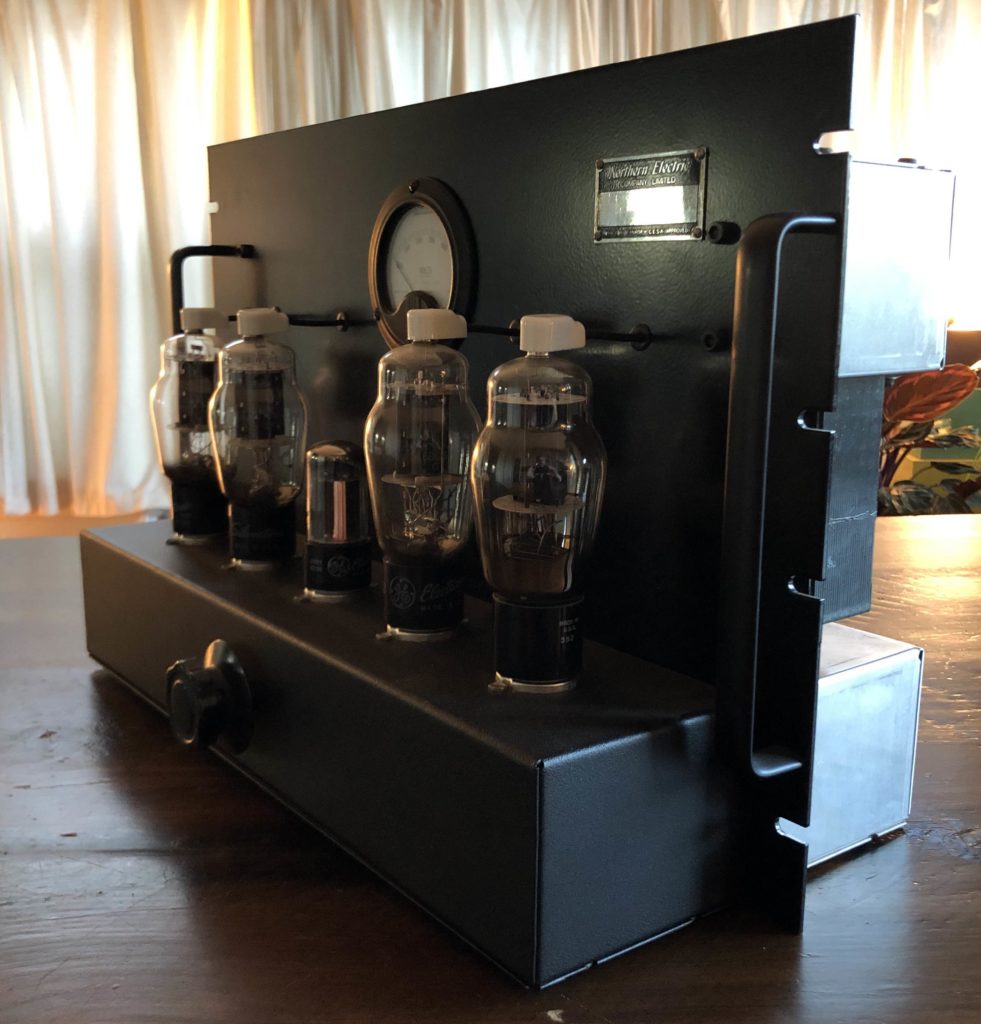
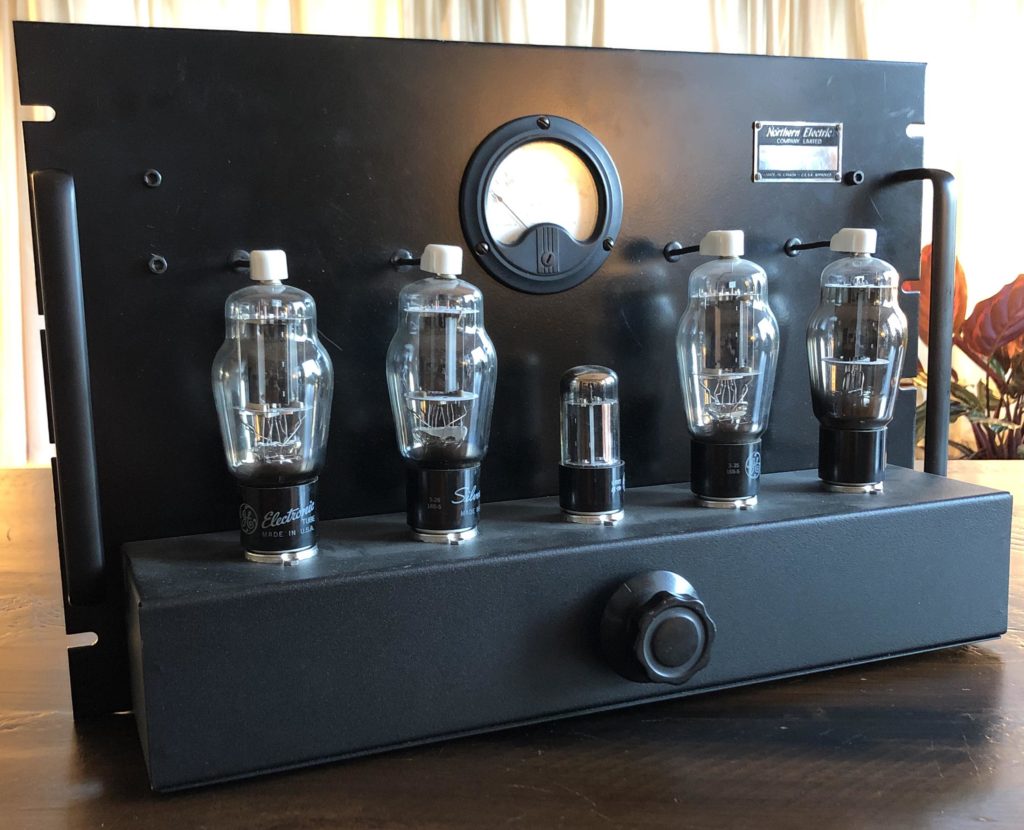
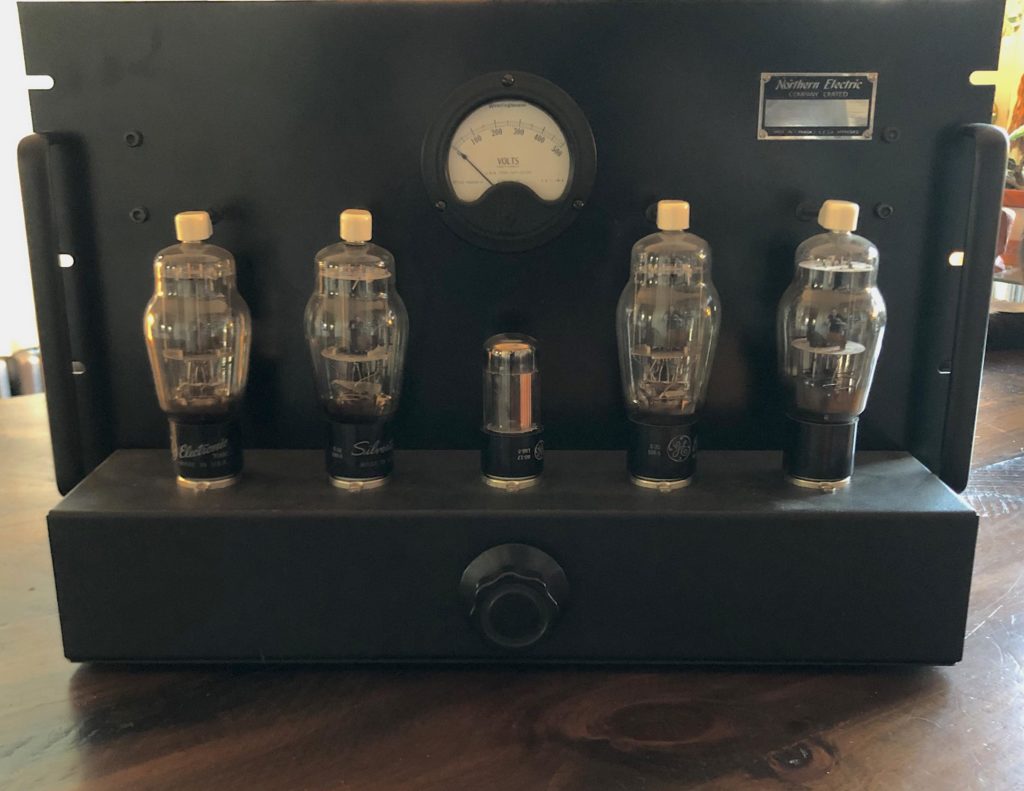
The piece you see above is my homage to the Western Electric 43A. The 43A, as far as I can determine, was the first audio amplifier developed specifically for cinema sound. According to online sources, it was released in 1928 or 1929 – a year or two after the first optical-track sync-sound film was shown publicly. (source, and source).
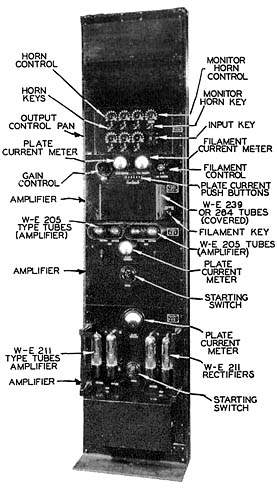
Above is the original context in which the 43A would have been found – it’s the piece on the bottom – and this entire massive apparatus represents a single 20-watt audio playback channel, with all associated power supplies, preamps, and control devices.
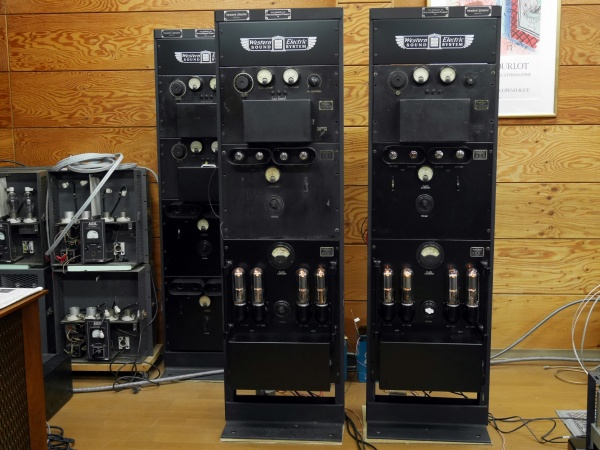
Above, a pair of these systems, as seen recently via a dealer in Japan.
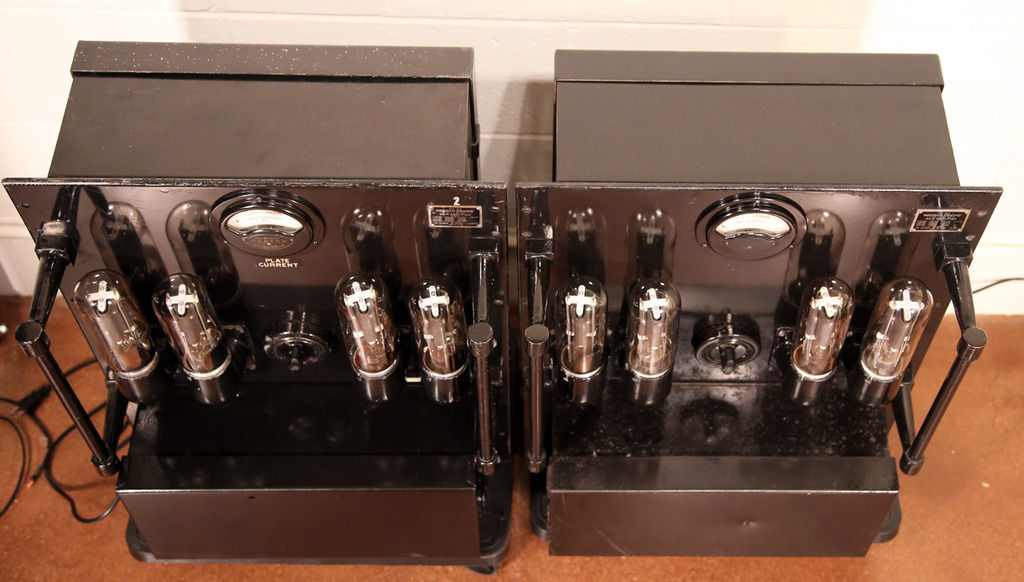
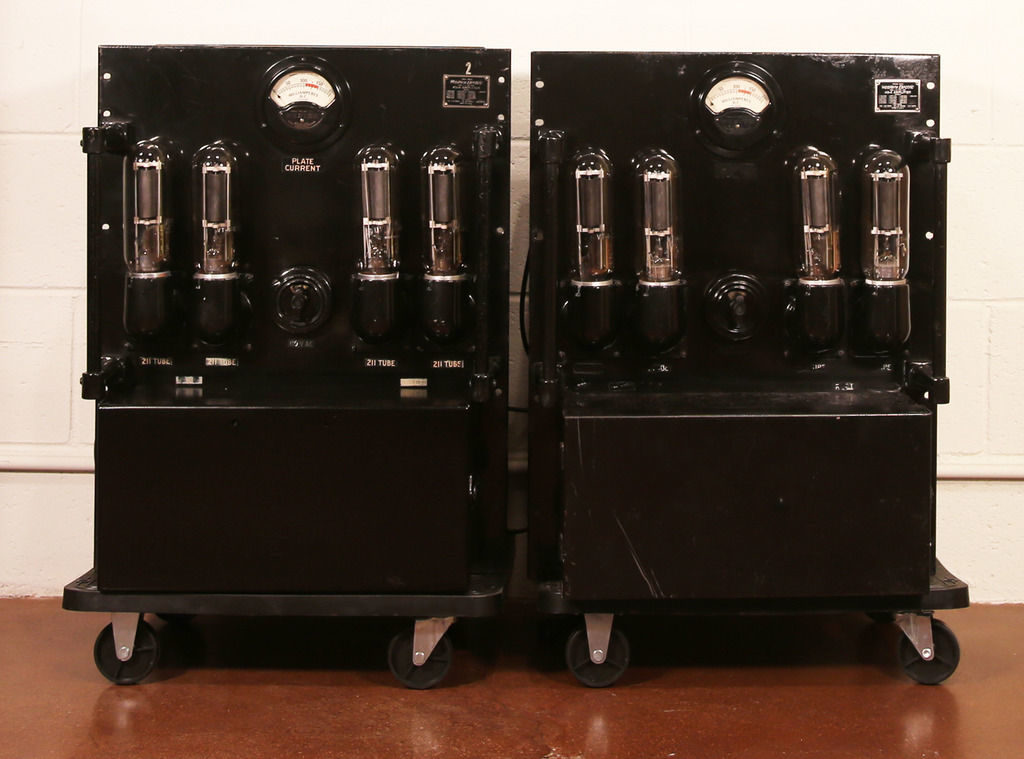
I don’t have a clear sense of how many 43A were made, so I don’t want to add to internet ‘swirl,’ but there can’t be too many out there. Above is a pair of 43A that sold in 2016 on eBay for $32,000. IMO This is a very fair price for such an incredible piece of history, but it’s not a sum I, or many people, are prepared to spend on a hifi amp; hence the idea to create this tribute piece.
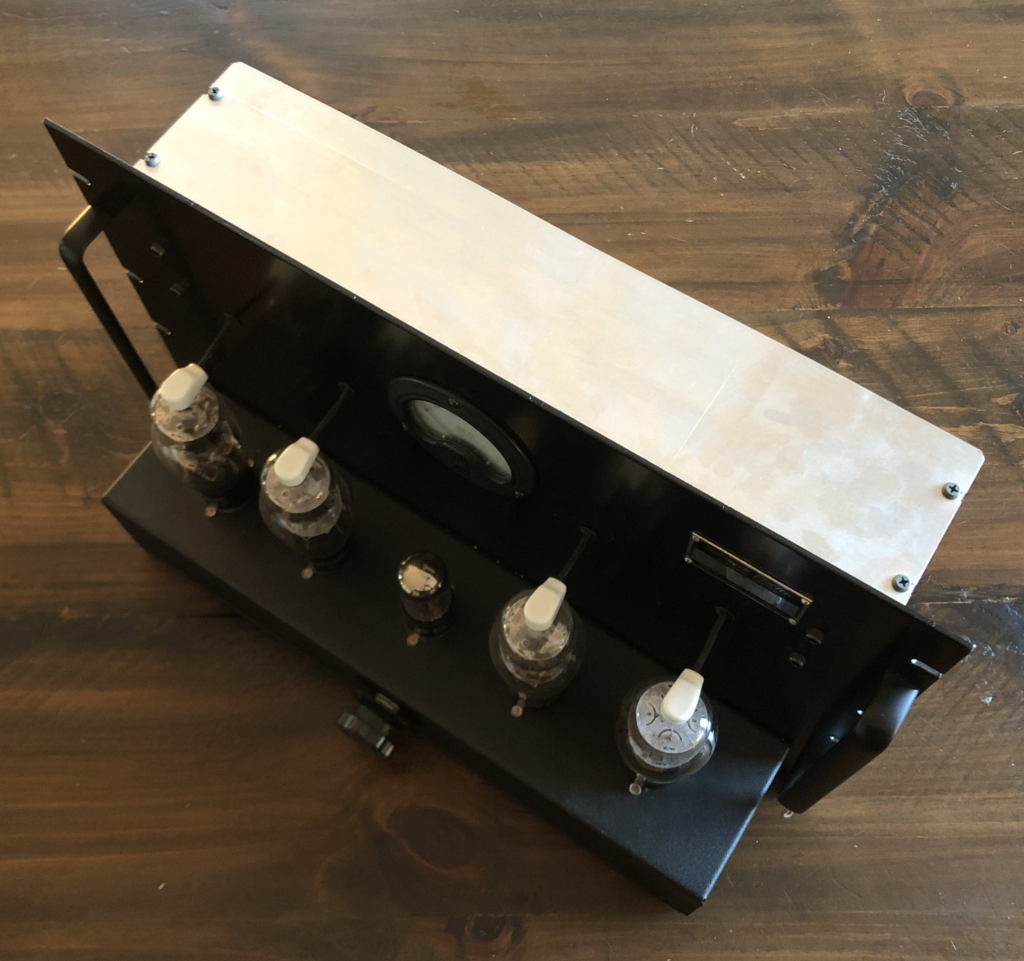
Back to my piece (above)… my goal was not, in any way, to make a copy of a 43A – it would be a fool’s errand, and not very practical – but rather to create a great-sounding and powerful stereo amp that honored the aesthetics of that iconic piece.
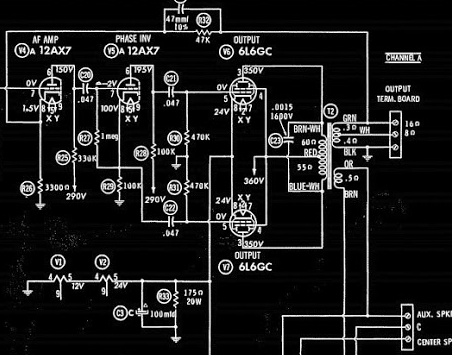
I wanted to use large, dramatic NOS tubes, but at a low cost; coke-bottle 6L6G would be nice but two matched pairs of those would be very pricey. So I subbed 6BG6GA instead. Basically a 6L6 with the plate in the top-cap. I chose the Altec 353A circuit (above), as I have built several Altec 323 and they sound great, and this is essentially the same circuit but using one fewer tube per channel. Since the mechanical construction of this thing was going to be a major PITA, I wanted to keep it as simple as possible electrically. The nameplate is a beat NOS “Northern Electric” mirror-finish plate that I found at Radio Hovsep a few years back.
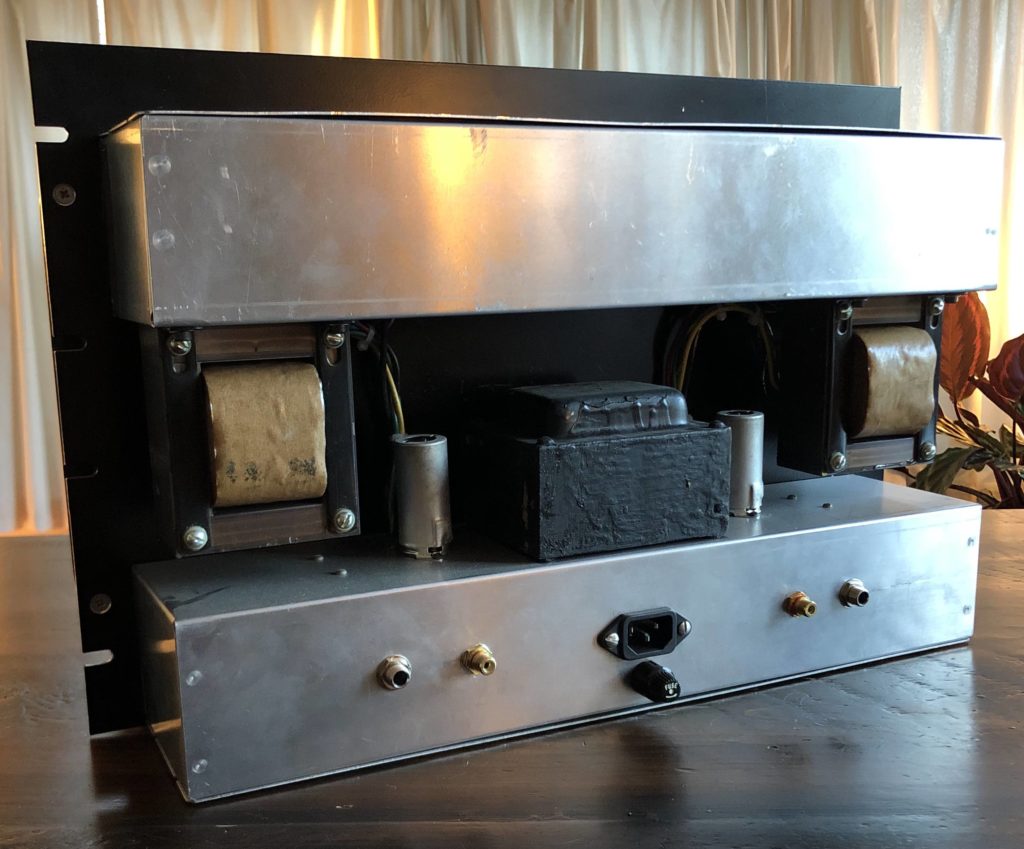
Here’s a shot of the rear. In order to keep hum induction to a minimum, I used aluminum wherever possible in the build. The output transformers (awesome nos 70s40-watt Schumachers with a great vintage look) are suspended from the top chassis in order to keep the plate leads as short as possible. The PT is a pull from an Eico ST70, which has more than enough current-handling ability for this device. The meter is a NOS 1930s 500VDC meter that displays plate voltage. The knob in the center is simply an on-off power control. I am assuming that this will be used with a preamp – probably a ’42 homage’ when I get around to it -although it gets plenty loud as-is with just a CD player connected to the RCA inputs.
This was a very difficult build in terms of the metal work. Getting all the various subchassis to line up was difficult but worth it in the end. It’s incredibly solid and has an imposing aura to it. The use of all Hammond-brand metal components ensured that the black finish(es) would all match and thereby present a unified appearance.
